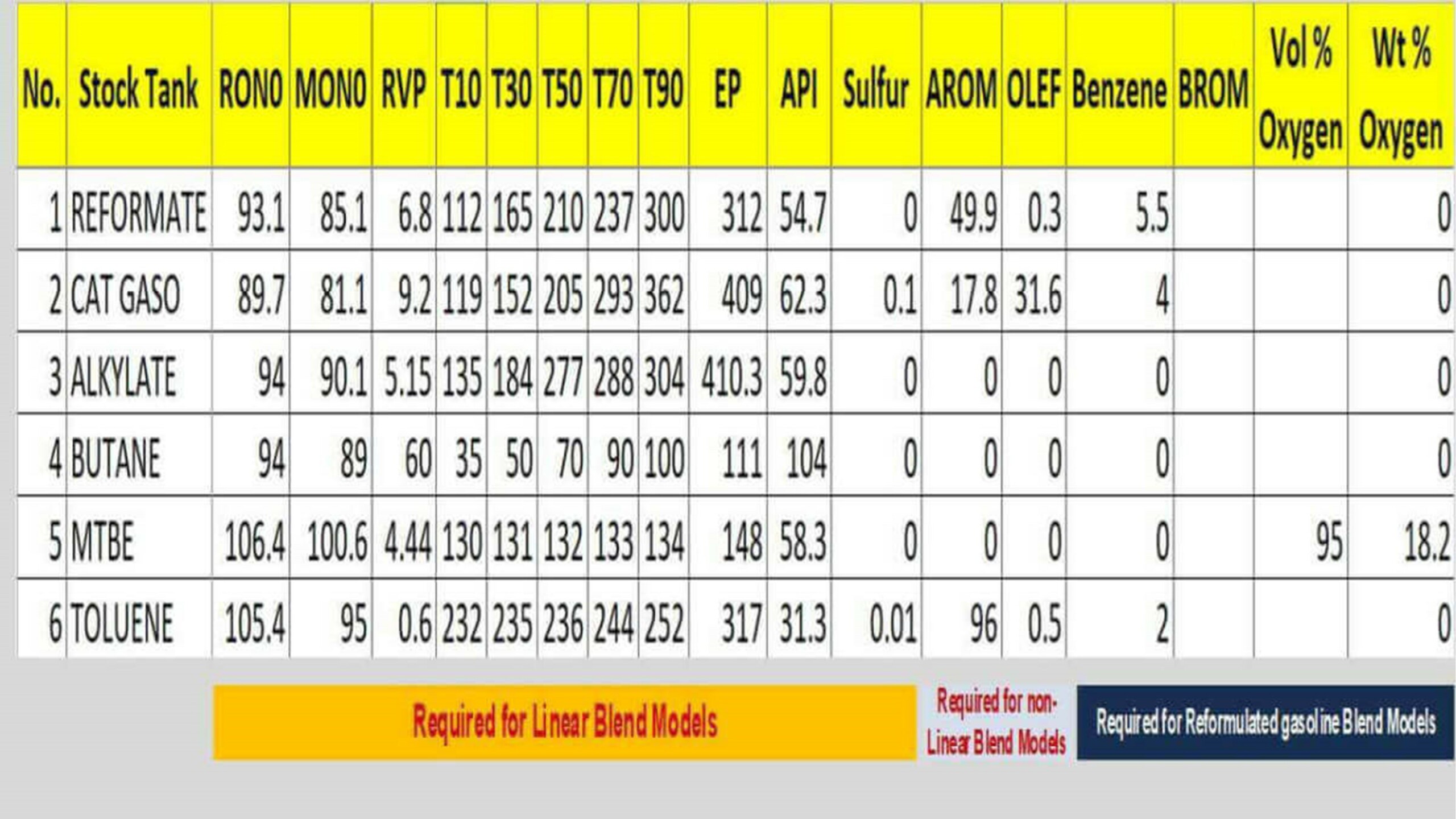Introduction
In a refinery, product blending plays a vital role in preparing final products for marketing purposes. Fuels blending must follow environmental regulations and ensure the optimal use of the final product. Databases keep records of feedstock inventory, availability of tanks, and blended qualities.
Information about the tank and feedstock inventory is provided by different integrated subsystems.
This topic will discuss blend component data, component quality/cost data, mandatory interfaces, blend tank qualities, blend specifications and heel qualities, component inventory, and daily production rates. Additionalyy it requires, blends production requirements, interfaces for real-time data, blends tank heel data, daily stock production rates, etc.
Blending Data for Control and Optimization
Linear programming models need information about flow streams for building material balance within a system. Interaction coefficients for all binary blends are used for the accurate prediction of gasoline blend properties. The main advantage of the interaction coefficient is to develop accurate spreadsheets for further use.
The ethyl method is the oldest one. Therefore, it serves as a benchmark for other models. Here, with the help of component sensitivity of RON-MON, olefin content, aromatic content, and blending nonlinearity are modeled. The concerned equation consists of olefin content (% by volume) and aromatic content (% by volume).
Blend controllers are necessary to prepare gasoline to meet quality specifications and market demand, and environmental regulations. A controller has a significant role in minimizing the quality giveaway and re-blending. “Quality giveaways” refers to gasoline that either exceeds or falls below the prescribed range. It results in a lower profit. Re-blending also leads to significant costs because equipment and tanks must be re-used. This is a time-consuming operation as well as costing money.
A wide range of technologies is used by refineries for blend optimization and control. Typical blending technology consists of an offline optimizer or scheduler, an online optimizer, and regulatory control.
Offline optimization is useful in planning refinery operations. It is used by a scheduler for long-range, intermediate-range, and short-range forecasts. Offline optimization can make long-range forecasts of product demands, prices, and process unit performance.
An online optimizer normally uses an online blender for the preparation of final blend recipes. This is done by modifying the initial recipe during the blending process.
Blend recipes are implemented by a DCS (Distributed Control System) through the online optimizer. It controls the target flow rates and amount of blended quantity.
Summary
Economic forecasts, forecasting quality, and availability of feedstock/tanks are used to develop long-term plans.
Options for eLearning This Topic
Browse Our Academy Course Catalog
#LinearProgrammingModels #StockProductionRates #BlendTankQualities #GasolineBinaryBlends #MinimizingQualityGiveaway #BlendingOnlineOptimizer #BlendingNonlinearity #PlanningRefineryOperations #RegulatoryBlendingControl #BlendingOfflineOptimizer #OlefinContentModel



1 2 3 4 5 100%
1 2 3 4 5 0%
1 2 3 4 5 0%
1 2 3 4 5 0%
1 2 3 4 5 0%